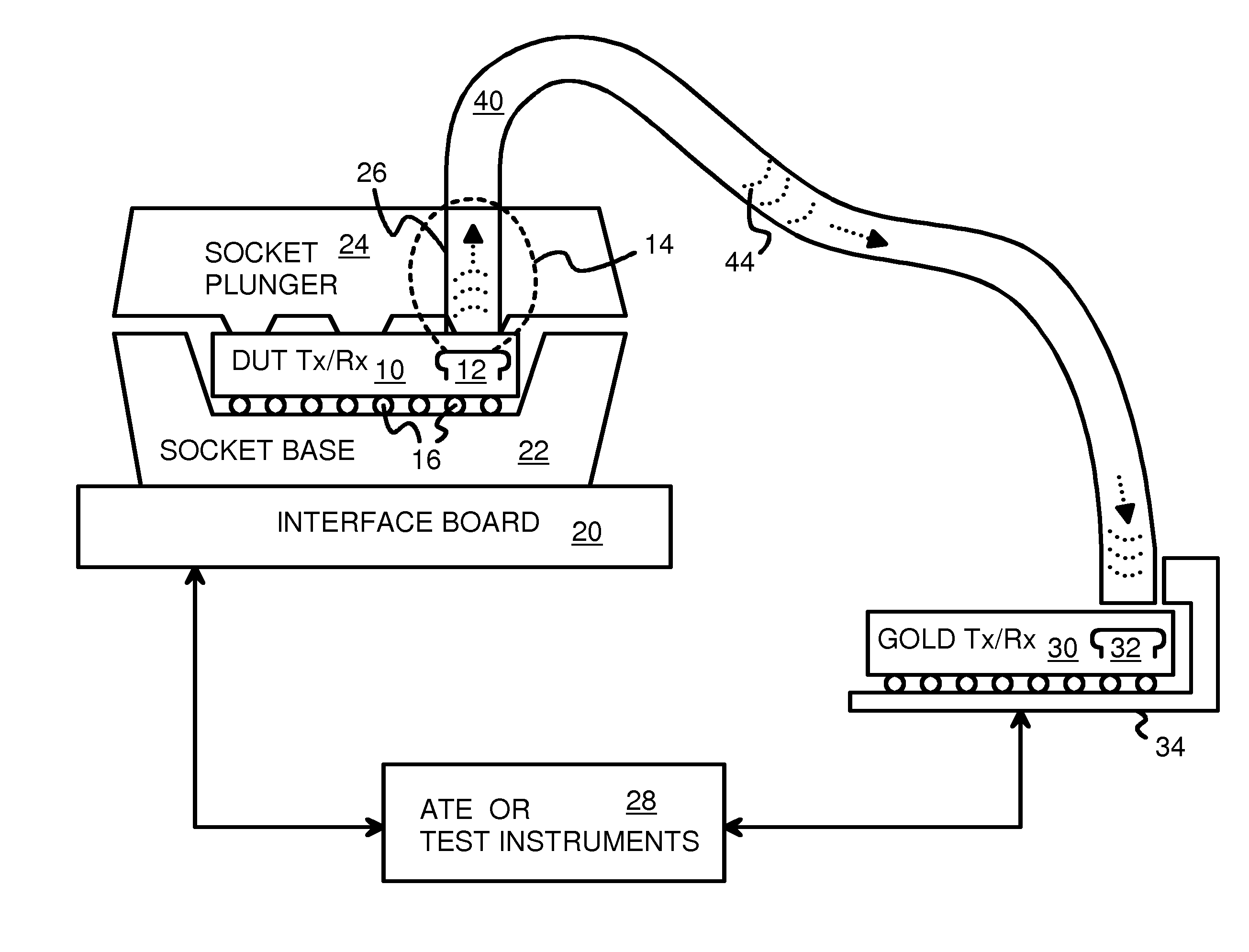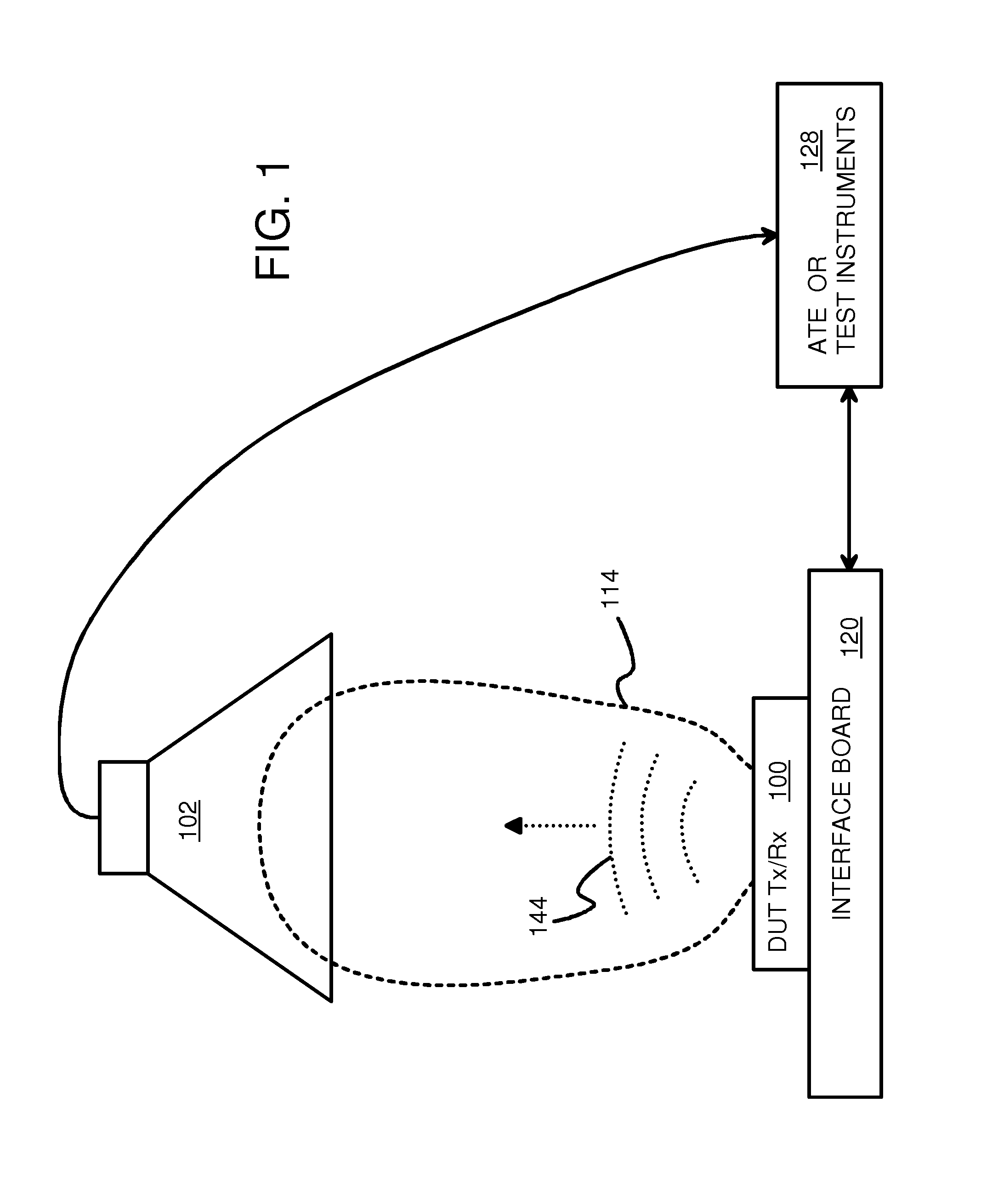Waveguides for Capturing Close-Proximity Electromagnetic Radiation Transmitted by Wireless Chips During Testing on Automated Test Equipment (ATE)
a technology of wireless chips and electromagnetic radiation, applied in the field of testers, can solve the problems of difficult or impossible to test in many test environments, large size and bulky, and large horn antennas
- Summary
- Abstract
- Description
- Claims
- Application Information
AI Technical Summary
Benefits of technology
Problems solved by technology
Method used
Image
Examples
Embodiment Construction
[0030]The present invention relates to an improvement in close-proximity testing. The following description is presented to enable one of ordinary skill in the art to make and use the invention as provided in the context of a particular application and its requirements. Various modifications to the preferred embodiment will be apparent to those with skill in the art, and the general principles defined herein may be applied to other embodiments. Therefore, the present invention is not intended to be limited to the particular embodiments shown and described, but is to be accorded the widest scope consistent with the principles and novel features herein disclosed.
[0031]The inventors have realized that a plastic waveguide may be used to capture EHF electromagnetic radiation from within the near field envelope and transport that radiation to a detector or receiver. Plastic material with a high relative permittivity (dielectric constant of 2.0 or greater) and low loss characteristics in t...
PUM
 Login to View More
Login to View More Abstract
Description
Claims
Application Information
 Login to View More
Login to View More - R&D
- Intellectual Property
- Life Sciences
- Materials
- Tech Scout
- Unparalleled Data Quality
- Higher Quality Content
- 60% Fewer Hallucinations
Browse by: Latest US Patents, China's latest patents, Technical Efficacy Thesaurus, Application Domain, Technology Topic, Popular Technical Reports.
© 2025 PatSnap. All rights reserved.Legal|Privacy policy|Modern Slavery Act Transparency Statement|Sitemap|About US| Contact US: help@patsnap.com



